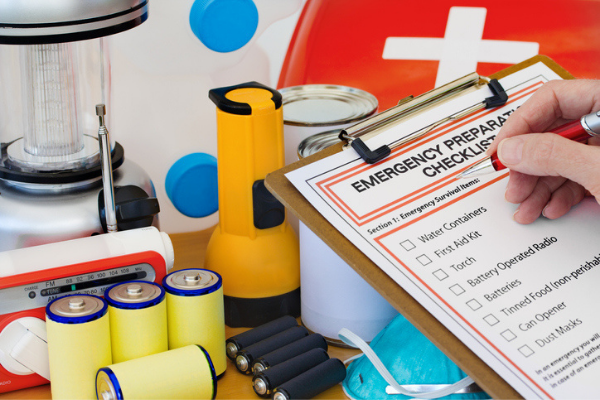
What’s the safety issue with stairs? You just go up and come back down; what’s complicated about that? Each year stairway accidents cause more than one million American injuries and about 12,000 deaths.
In many local regulations of private homes, every set of stairs is required to have a handrail. In all public buildings, staircases should have handrails on each side. Use the handrails on a regular basis.
Take a careful look at stairs that you use on a regular basis, at work and at home. Is the lighting adequate all the way up to the top? Do the steps seem to be the same size with identical clearance to the next step? Are any steps or railings damaged? Can you see the outer edge of each step clearly?
Businesses often use tape or lighting to mark the edges. If you cannot see the entire stairway (e.g., if there is a 90- or 180-degree turn on a landing), you must watch and listen for anyone who might be coming in the opposite direction. If (when) you start wearing glasses with bifocal lenses, take note of how you have to move your head to avoid looking through the magnifying lenses. Practice walking up and down stairs.
At work, keep all stairways free of clutter at all times. At home, minimize items stored on the steps. Clean up spills on stairs and landings as soon as they occur. At work, you may be required to block access to stairs if you need to get cleaning materials. From a preventative perspective, always have a lid on beverage containers. Wipe your feet thoroughly on an entrance carpet if you are coming into the building after walking in rain or snow.
Anytime you walk up or down stairs, keep one hand free to grab the rail if you slip or stumble. Your free hand should be next to the rail. Some businesses and schools may have policies directing people to a specific side depending on which direction you are walking. To minimize the chance of serious injury, put your free hand on the railing (lightly touching is sufficient) as you walk up or down the stairs. For most of us, there will come a time when we will not have to be encouraged to hold on to the railing.
Here is the complication for chemists or anyone else. What might you be carrying as you walk up or down the stairs? Do you have books, coffee, equipment, a beaker or flask, a jar or bottle of a reagent chemical, or a box containing any of the aforementioned items? You should keep one hand free at all times!
If carrying a box (one-handed, really?), is your vision blocked? What if the items you are carrying make it impossible to keep one hand free? Take the elevator. Your organization may require you to use a freight elevator if carrying hazardous materials. The National Safety Council notes that staircase and stairway accidents are the second leading cause of accidental injury, second only to motor vehicle accidents. These are some of the safety issues with stairs. Admit it, you probably have not thought about them very often. Stay safe and keep one hand free on the stairs.
The opinions expressed in this article are the author's own and do not necessarily reflect the view of their employer or the American Chemical Society.
Copyright 2020 American Chemical Society (All Rights Reserved)







